About 75% of Yosemite’s annual visitors arrive between May and September, when weather is most reliable and roads and services are usually open.
I plan my trips around a simple rule: match goals with seasons. I aim for roaring waterfalls in late spring, high-country hikes in summer, golden leaves in fall, and quiet snow-filled valleys in winter.
Summer brings full access but big crowds, while shoulder months often give me clearer trails and easier lodging. I also track road openings — Tioga and Glacier Point often shut in winter and reopen in late spring.
For practical planning, I use the park’s official guide for closures and reservations at Yosemite planning. That helps me pick weekdays, early starts, and the right months for waterfalls or solitude.
Key Takeaways
- Most visitors come May–September; July–August are busiest.
- Peak waterfalls: May to early June; Horsetail Fall lights up in February.
- Tioga and Glacier Point roads close in winter and reopen around late spring.
- Shoulder months often balance weather, access, and lighter crowds.
- Book summer lodging early; winter midweek stays can be easier.
How I Decide the Best Time to Visit Yosemite for My Trips
I start with one question: what do I want from this national park? That guides which months I pick and what I pack.
I note season-specific facts up front: November–April is quieter, and January is often the least crowded month. I also track closures—Tioga Road and Glacier Point Road usually shut in winter and reopen in late spring.You can learn more about best-time-to-visit-glacier-national-park.
I weigh crowds and access, and I use online information about reservations during peak months. Peak waterfalls run May to early June; fall color tends to peak late October to early November.
- I list goals first—waterfalls, high-country hikes, or calm valley days—and choose months that match.
- I plan for road access if I need Tioga or Glacier Point, otherwise I focus on valley routes in winter.
- I prefer weekdays and early starts to beat crowds and make the most of each day.
- I keep flexible backups: low-elevation loops, scenic drives, and recent condition checks before I lock dates.
best time to visit yosemite: Seasons, Crowds, and Weather at a Glance
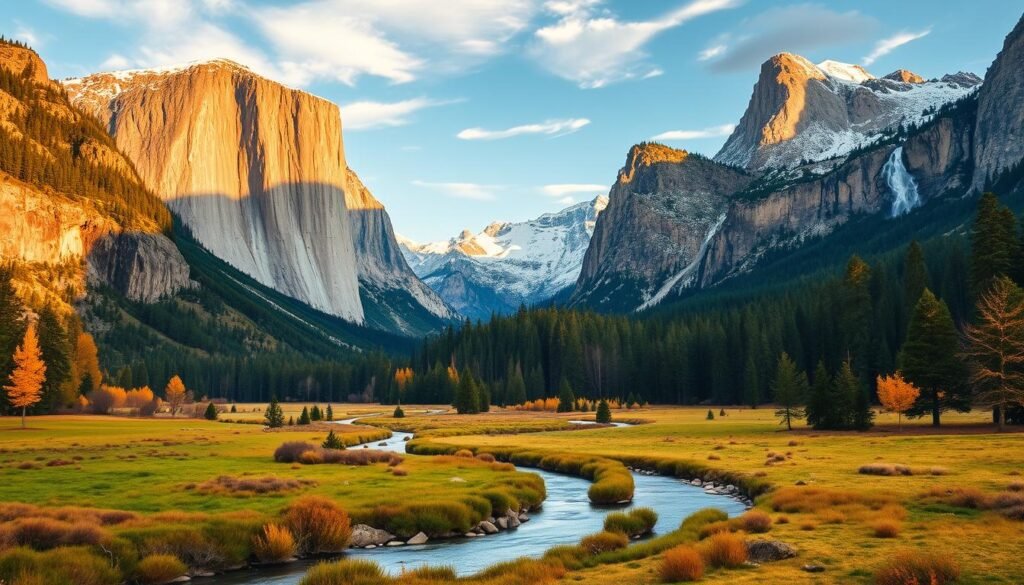
I set choices by one clear split: warm months with wide access or quiet months with winter character. May–September is the park’s classic peak, when most services and roads are open and many visitors arrive. About 75% of visitors come in that window, with July and August busiest.
November–April is the quieter half of the year. January is often the least crowded month. Snowfall shapes travel then, and Tioga or Glacier Point may be closed.
Typical temperatures and precipitation
Valley highs run from the mid-40s °F in December and January up to roughly 80 °F in July and August. June and September are usually among the driest months.
The park gets nearly 95% of its precipitation from October through May, with about 75% falling between November and March. That rainfall and snowpower most waterfall flows and influence road access.You can learn more about best-places-to-visit-in-italy.
Why March–April and October–November work well
I like March–April for early waterfalls and manageable crowds; late storms are still possible and some high-country routes can stay closed. October–November brings crisp air, clear light, and fall color with fewer people.
- Rule of thumb: maximum access in June–September; maximum calm late fall through early spring.
- In peak years, entry reservations may apply, so shoulder months often feel smoother when I plan my time visit.
When Waterfalls, Wildflowers, and Classic Views Are at Their Best
Spring and early summer are when Yosemite’s water features truly steal the show. I plan days around surge windows and flower peaks so each outing matches what I came for.
Waterfalls in peak flow
Waterfalls in peak flow: April to early June
Peak waterfall flow usually runs April through early June as snowmelt swells falls like Yosemite Falls and the Mist Trail cascades. I start Mist Trail hikes at dawn to enjoy spray, light, and fewer people.
Wildflower windows: May–August across elevations
Wildflowers open from yosemite valley meadows in spring and move up to Tuolumne Meadows by mid-summer. I map my routes by elevation so I catch shooting stars, columbine, and fireweed when they peak.You can learn more about best-time-to-visit-alaska.
Firefall magic: Horsetail Fall at sunset in February
The Horsetail “firefall” is a short, dramatic window in February when light, clear skies, and flow align. I watch forecasts, arrive early, and plan for a patient evening—that brief glow is worth the wait.
- I pack quick-dry layers and traction for wet granite near Vernal and Nevada Falls.
- I shift plans in late summer when many waterfalls taper, trading spray for alpine lakes and domes.
- Weekday dawn starts give me space to savor strong flow and classic viewpoints like Tunnel View.
Road and Trail Access: Tioga Road, Glacier Point Road, and High Country Timing
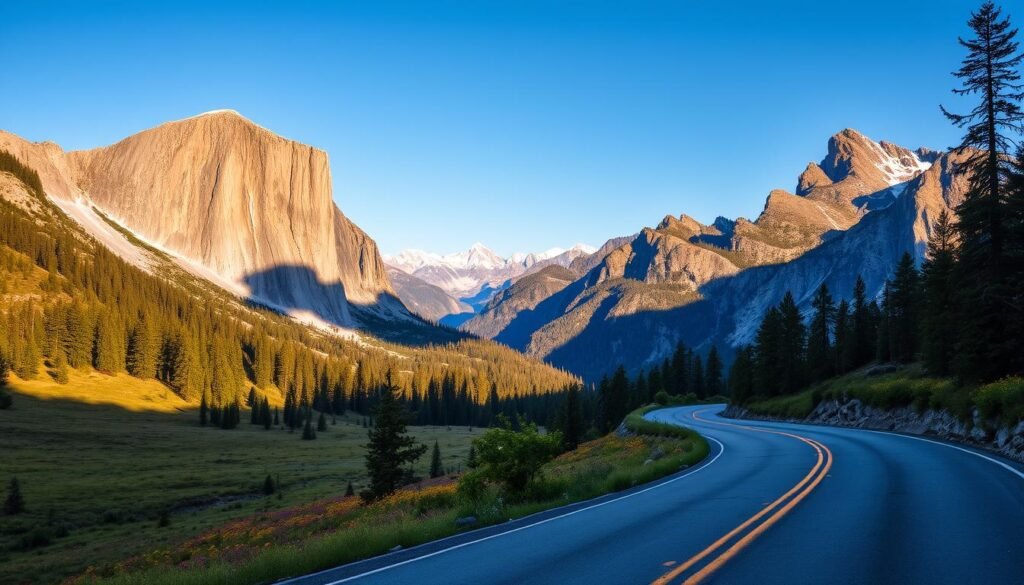
Road openings shape what I can reach and when I lace up my boots. Knowing habitually closed routes helps me plan days that hit alpine highlights without surprise detours.
Tioga Road openings and what you’ll see on the drive
Tioga Road, the lone east–west crossing, usually opens in late May or early June and often closes by October or November, depending on snow.things-to-do-in-newport-ri
On that drive I stop at Tenaya Lake, Lembert Dome, and walk through Tuolumne Meadows. I budget a full day for meadows, lakes, and sunset light at a high-country stop.
Glacier Point access for Half Dome views and short hikes
Glacier Point roads open in late spring and close for winter. From Glacier Point I get sweeping Half Dome panoramas and quick trailheads to Sentinel Dome and Taft Point.
I aim for sunset there but arrive early—parking fills fast on popular days.
High-country hiking windows around Tuolumne Meadows
Above roughly 8,000 feet, trails clear from early or mid-summer through early fall in most years. Big snow years push that window later, so I check conditions before I go.
I carry layers, traction for shady stretches, and plenty of water at elevation. That helps me enjoy the high roads and alpine trails safely.
Beating the Crowds Without Compromising the Experience
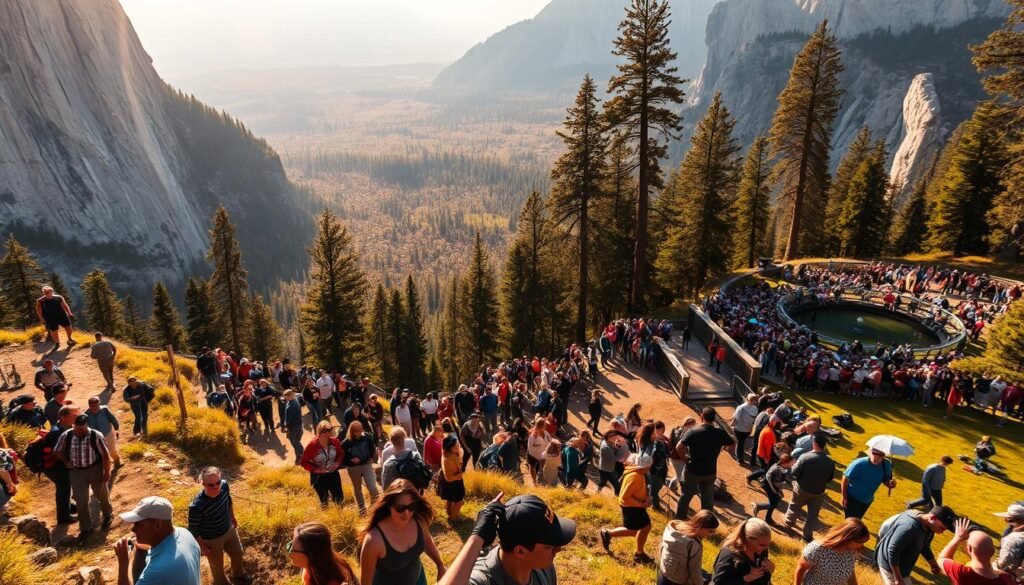
A small shift in schedule often turns a crowded day into a calm one for me. I pick quieter months and plan each day so I still see the park’s highlights without the squeeze.You can learn more about est-time-to-visit-puerto-rico
Quietest months and days I choose (and how I plan them)
November through April usually has the fewest visitors, with January often the least busy month. I aim for midweek stays and focus on valley routes when high-country roads are closed.
What peak July–August feels like—and how I still make it work
July and August bring full campgrounds and heavy trail use. I pre-book lodging or campsites, expect lines, and use sunrise starts to claim views before the crowds arrive.
- I stack dawn hikes, late lunches, and sunset stops so popular viewpoints clear during the day.
- I keep backup loops and lesser-known pullouts ready if a trail gets too packed.
- I carry food and water to avoid midday waits, and I check entry reservation rules ahead of any busy season day.
Staying flexible, patient, and strategic is the best way I know to enjoy this national park even when crowds are high.
What I Do Each Season: Activities, Trails, and Conditions
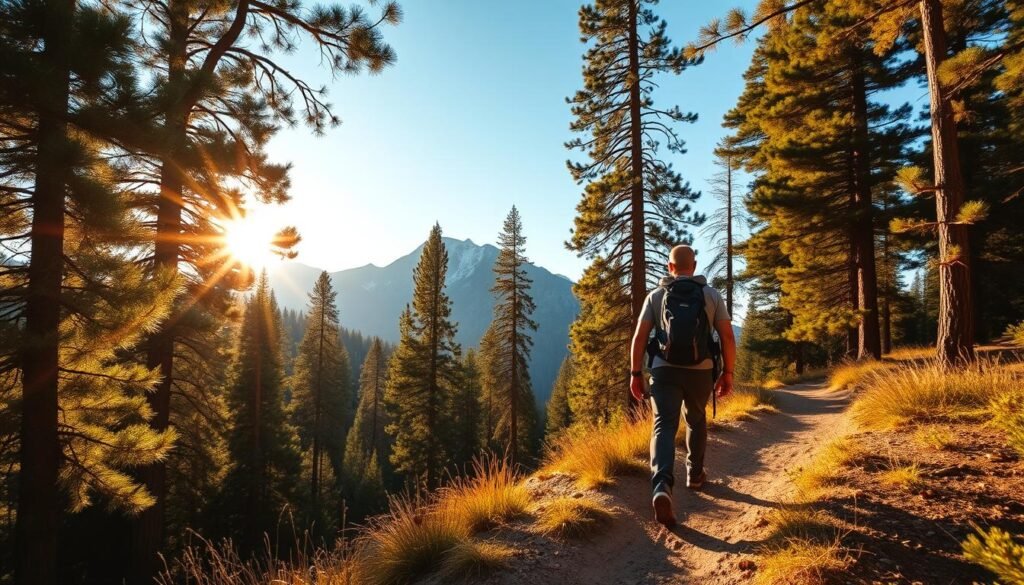
Each season in the park hands me a new set of goals and gear. I pick rough plans, then refine them by checking road and trail status so my days match current conditions.
Spring: rushing waterfalls and rising access
In spring I chase roaring falls in the valley. I pack for variable conditions and verify which trails open as snow melts.things-to-do-in-amsterdam
Trail goals: Mist Trail or Yosemite Falls early in the day to catch peak flow and cooler light.
Summer: long days and high-country hikes
Summer brings high-country hiking and Tioga or Glacier Point access when snow cooperates. I rise early, plan lakeside lunches, and rest in shade during hot afternoons.
Trail choices include Sentinel Dome, Taft Point, and Tuolumne day hikes.
Fall: crisp air and fading crowds
Fall offers crisp mornings and late-October color with fewer people. I shorten routes as daylight drops and savor golden light on valley loops.
Winter: snowy serenity and cozy valley walks
Winter means quiet trails, ice skating at Curry Village, and snow-blanketed evenings. I pick snow-friendly strolls and limit how far I hike each day.
- I layer smart every season because elevation and breezes change conditions fast.
- I keep backups—photo drives, museum stops, or wildlife watching—when weather shifts.
- I use sunrise and sunset timing year-round for better light and fewer crowds.
Camping and Lodging: Getting a Spot in Any Season
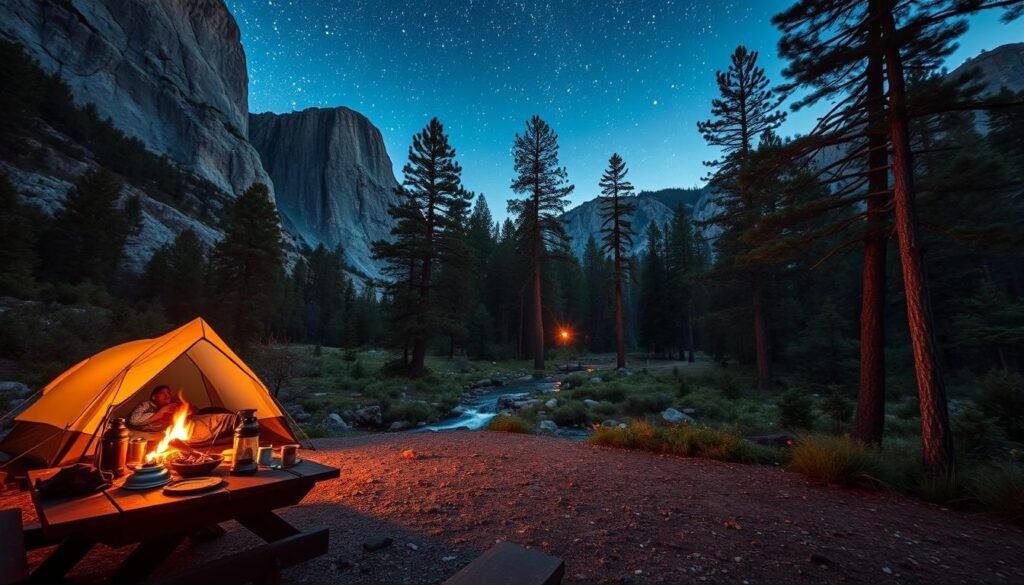
Finding a dependable place to sleep makes every day in the park smoother. I lean on valley options when I want convenience, and on campgrounds when I want a close-to-nature stay.best-places-to-visit-in-arizona
Year-round options and booking strategy
The Ahwahnee and Yosemite Valley Lodge run year-round, so I check them first for shoulder-season availability. When summer crowds rise, I book far ahead and align dates with any entry rules.
I also watch for cancellations and midweek openings; they often appear outside holidays and can save a trip.
Seasonal campgrounds and comfortable months
Camp 4, Upper Pines, and Hodgdon Meadow commonly stay open year-round, while many sites open in late May and close in fall. I prefer late spring through early fall for mild nights.
- I pack cold-weather gear for winter nights and a warm bag for shoulder-season chills.
- I favor valley lodging for proximity during busy months to reduce driving and parking stress.
- For official camping rules and reservations I use the park’s camping page at camping information.
My Quick Picks: The Best Time to Visit Yosemite for Your Goals
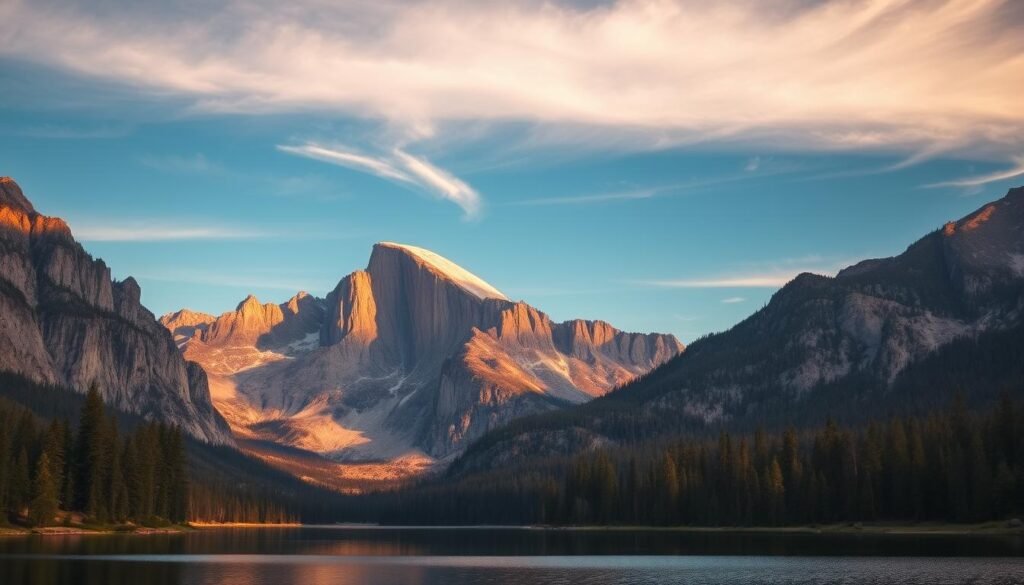
I plan each trip around clear goals — what I want to photograph, where I want to hike, and how much crowd I can tolerate. Below are compact picks that match activities with likely road and trail access across the months.
For waterfalls and photography
May–early June gives the loudest waterfalls and soft sunrise light. Add February for the Horsetail firefall if conditions align.
For hiking High Sierra trails
Focus on July–September for reliable Tioga and Glacier Point access, but watch yearly snowpack before you lock plans.
For peaceful weekends and fewer crowds
November–April is quiet; January and shoulder windows in March–April and October–November offer the calmest valley days.best-places-to-visit-in-france
For road trips and scenic drives
June and September deliver comfortable driving, likely-open high-country roads, and clear skies for long scenic loops.
| Goal | Prime Months | Why |
|---|---|---|
| Waterfalls & photos | May–Early Jun, Feb | Peak flows; firefall window |
| High Sierra hiking | Jul–Sep | Tioga/Glacier roads open |
| Peace & solitude | Nov–Apr (Jan quiet) | Fewer visitors; winter calm |
| Road trips | Jun, Sep | Dry roads; comfy temps |
Conclusion
Choosing a narrow window each year helps me see different sides of this yosemite national park. I match goals with months so waterfalls, high-country hikes, or quiet valley days land at the right season.
For broad access I favor June–September when Tioga Road and Glacier Point roads are usually open. For strong waterfall flow I pick May to early June, and for shoulder calm March–April or October–November works well.
Winter brings snow, short days, and quiet Yosemite Valley scenes; January often feels the least crowded. Wherever I plan, I check conditions, pack layers for shifting temperatures, and treat the park with respect so nature and wildlife stay safe.


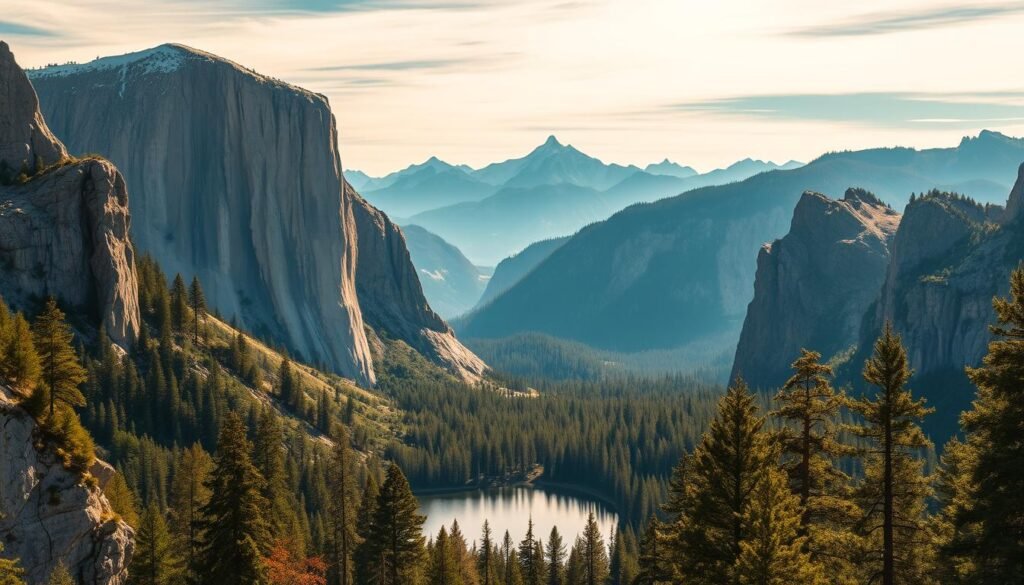



















One Response